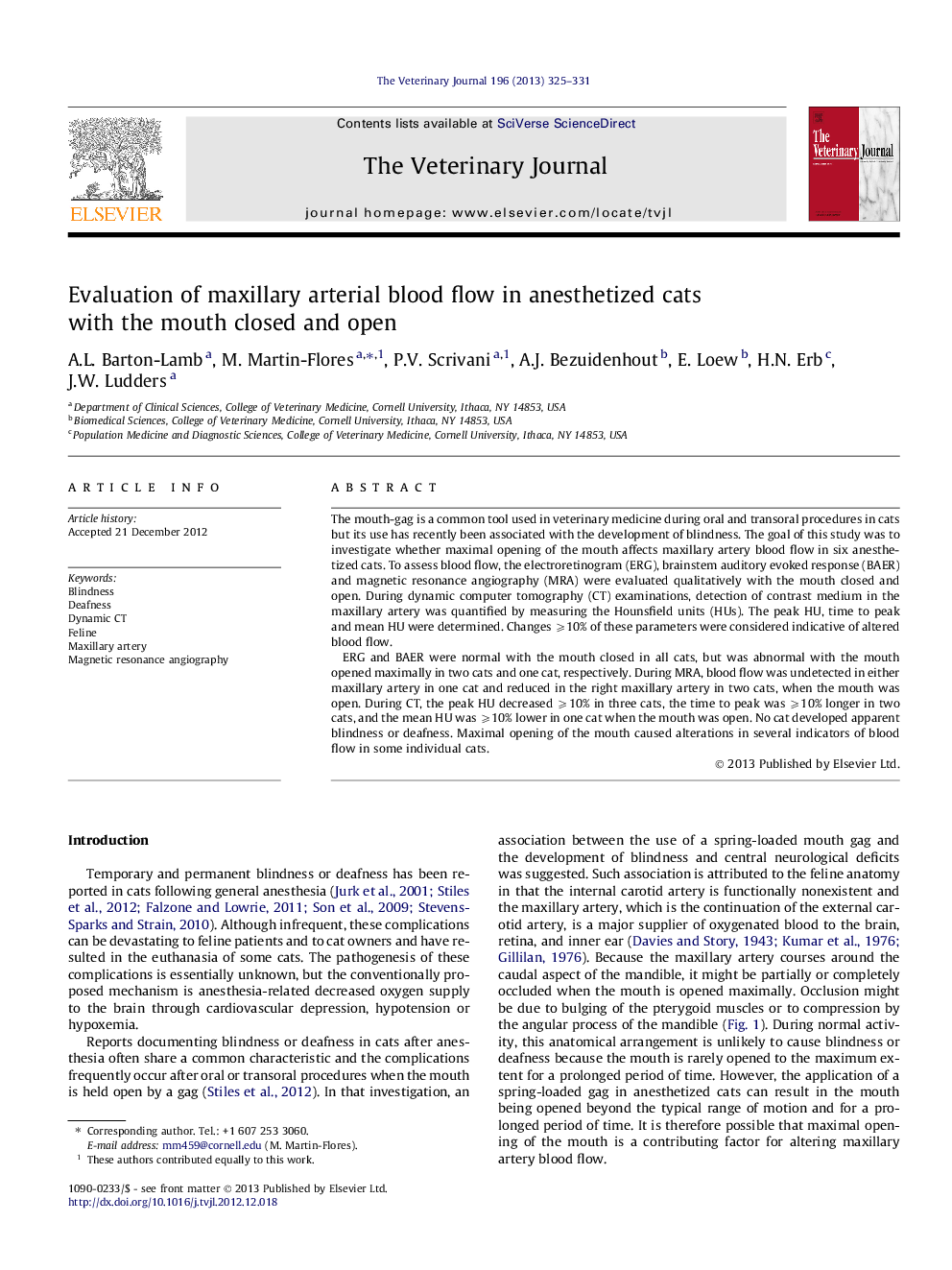| Article ID | Journal | Published Year | Pages | File Type |
|---|---|---|---|---|
| 5798676 | The Veterinary Journal | 2013 | 7 Pages |
The mouth-gag is a common tool used in veterinary medicine during oral and transoral procedures in cats but its use has recently been associated with the development of blindness. The goal of this study was to investigate whether maximal opening of the mouth affects maxillary artery blood flow in six anesthetized cats. To assess blood flow, the electroretinogram (ERG), brainstem auditory evoked response (BAER) and magnetic resonance angiography (MRA) were evaluated qualitatively with the mouth closed and open. During dynamic computer tomography (CT) examinations, detection of contrast medium in the maxillary artery was quantified by measuring the Hounsfield units (HUs). The peak HU, time to peak and mean HU were determined. Changes ⩾10% of these parameters were considered indicative of altered blood flow.ERG and BAER were normal with the mouth closed in all cats, but was abnormal with the mouth opened maximally in two cats and one cat, respectively. During MRA, blood flow was undetected in either maxillary artery in one cat and reduced in the right maxillary artery in two cats, when the mouth was open. During CT, the peak HU decreased ⩾10% in three cats, the time to peak was ⩾10% longer in two cats, and the mean HU was ⩾10% lower in one cat when the mouth was open. No cat developed apparent blindness or deafness. Maximal opening of the mouth caused alterations in several indicators of blood flow in some individual cats.
